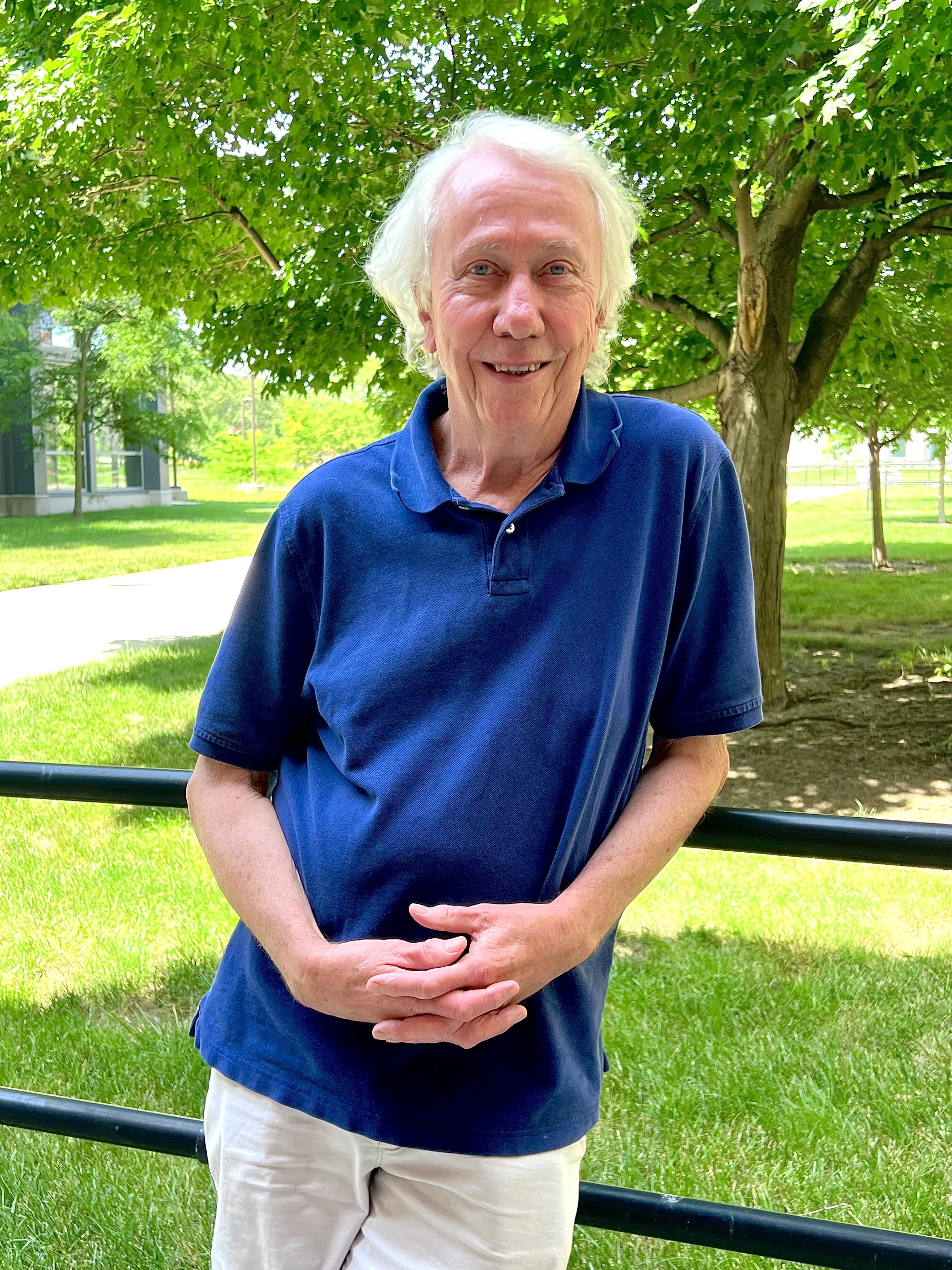Stephen Wassall, Ph.D.
Professor
Physics

Professor
Physics
The research in my laboratory is focused upon the application of solid state NMR techniques to the study of molecular organization within membranes. The objective is to develop relationships between the structure of biologically important molecules and their physiological function.
Solid state NMR is necessitated with membranes, since the anisotropic nature of molecular motions therein produces spectra that are too broad to be detected by standard solution state methods. We employ two solid state NMR approaches, broadline NMR and magic angle spinning (MAS) NMR. The former entails lineshape analyses of distortion free spectra that must be acquired with fast digitisation and high power observe pulses, while spectral narrowing is achieved in the latter by high speed rotation of samples in an air driven rotor.
Projects include:
Polyunsaturated Membranes
Large concentrations of polyunsaturated fatty acids (PUFA) are found within the phospholipids of certain membranes, e.g. as high as 25-35 mol% docosahexaenoic acid, which has 6 double bonds, in neural membranes. They presumably provide a membrane environment essential to biological function that cannot be fulfilled by simpler lipids. Our broadline 2H NMR experiments seek to determine the influence of PUFA on the physical properties of model membranes. We have seen, for instance, that membrane solubility of cholesterol is reduced by introduction of polyunsaturation and that the angle of tilt for incorporated sterol is greater.
Peptide Conformation
Conventional methods of structural determination, X-ray diffraction and multidimensional solution state NMR, are inapplicable to membrane bound peptides. Rotational resonance (RR) offers an answer. This MAS experiment reintroduces the dipolar interactions between labelled sites, from which interatomic distances are derived. In an international collaborative project we are using RR to determine the change in conformation of melittin, the cytolytic component in bee venom, when it binds to a model membrane.
Shaikh SR, Cherezov V, Caffrey M, Soni SP, LoCascio D, Stillwell W and Wassall SR (2006)
Molecular Organization of Cholesterol in Unsaturated Phosphatidylethanolamines: X-ray Diffraction and Solid State 2H NMR Reveal Differences with Phosphatidylcholines.
J. Amer. Chem. Soc. 128 5375-5383.
Harroun TA, KatsarasJ and Wassall SR (2006)
Cholesterol Hydroxyl Group is Found to Reside in the Center of a Polyunsaturated Lipid Membrane.
Biochemistry 45 1227-1253.
Stillwell W, Shaikh SR, LoCascio D, Siddiqui RA, Seo J, Chapkin RS and Wassall SR (2006)
Docosahexaenoic Acid. An Influential Membrane-Altering Omega-3 Fatty Acid.
Frontiers in Nutrition Research (J.D. Huang, ed.), Nova Science Publishers, Inc. Hauppauge, NY, Ch 8249-271.
Stillwell W, Shaikh SR, Zerouga M, Siddiqui R and Wassall SR (2005)
Docoshexaenoic Acid Affects Cell Signaling by Altering Lipid Rafts.
Reprod. Nutr. Dev. 45 559-579.
Wassall SR, Shaikh SR, Brzustowicz MR, Cherezov V, Siddiqui RA, Caffrey M and W. Stillwell (2005)
Interaction of Polyunsaturated Fatty Acids with Cholesterol: A Role in Lipid Raft Separation.
Macromolecular Symposia 219 73-84.
Wassall SR, Brzustowicz MR, Shaikh SR, Cherezov V, Caffrey M and Stillwell W (2004)
Order from Disorder. Corralling Cholesterol with Chaotic Lipids. The Role of Polyunsaturated Lipids in Membrane Raft Formation.
Chem. Phys. Lipids 132 79-88.
Shaikh SR, Dumaual AC, Castillo A, LoCascio D, Siddiqui RA, Stillwell W and Wassall SR (2004)
Oleic and Docosahexaenoic Acid Differentially Phase Separate from Lipid Raft Molecules: A Comparative NMR, DSC, AFM, and Detergent Extraction Study.
Biophys. J. 87 1752-1766.
Armstrong VT, Brzustowicz MR, Wassall SR, Jenski LJ and Stillwell W (2003)
Rapid Flip-Flop in Polyunsaturated (Docosahexaenoate) Phospholipid Membranes.
Archives Biochemistry Biophysics 414, 74-82.
Lee C-W, Decca RS, Wassall SR and Breen J (2003)
Domain formation on in the L_� state of 1,2-Dipalmitoylphosphatidylcholine Bilayers.
Physical Review E 67, 061914.
Shaikh SR, Cherezov V, Caffrey M, Stillwell W and Wassall SR (2003)
Interaction of Cholesterol with a Docosahexaenoic-Acid Containing PE: Trigger for Microdomain/Raft Formation?
Biochemistry 42, 12028-12037.
Stillwell W and Wassall SR (2003)
Docosahexaenoic Acid: Membrane Properties of a Unique Fatty Acid.
Chemistry &Physics &Lipids 126, 1-27.
Brzustowicz MR, Cherezov V, Caffrey M, Stillwell W and Wassall SR (2002)
Molecular Organization of Cholesterol in Polyunsaturated Membranes: Microdomain Formation.
Biophys. J. 82, 285-298.
Brzustowicz MR, Cherezov V, Zerouga M, Caffrey M, Stillwell W and Wassall SR (2002)
Controlling Membrane Cholesterol Content. A Role for Polyunsaturated (Docosahexaenoate) Phospholipids,
Biochemistry 41, 12509-12519.
Decca RS, Lee C-W, Lall S and Wassall SR (2002)
Single Molecule Tracking Scheme Using a Near-Field Scanning Optical Microscope.
Rev. Sci. Instr. 73, 2675-2679.
Shaikh SR, Brzustowicz MR, Gustafson N, Stillwell W and Wassall SR (2002)
Monounsaturated PE Does Not Phase Separate From Lipid Raft Molecules Sphingomyelin and Cholesterol: Role for Polyunsaturation?.
Biochemistry 41, 10593-10602.